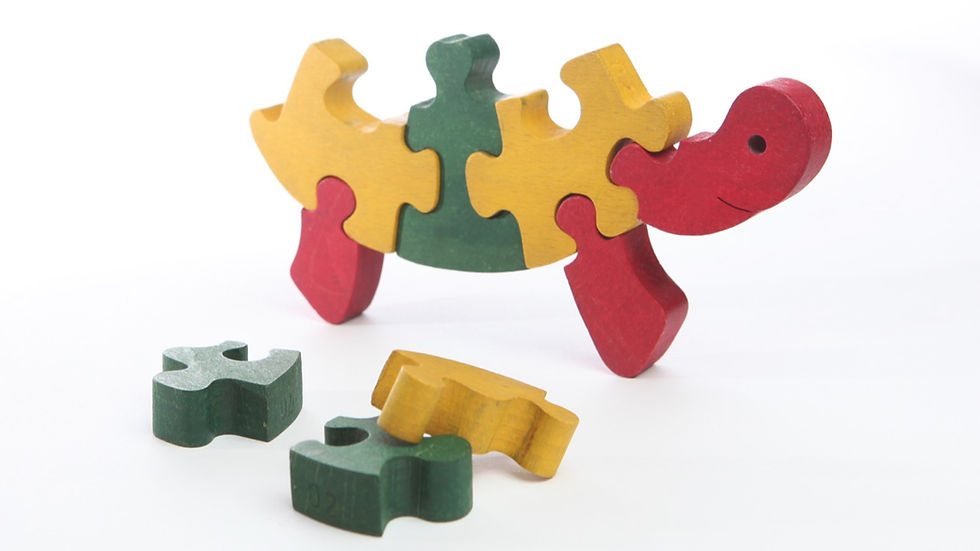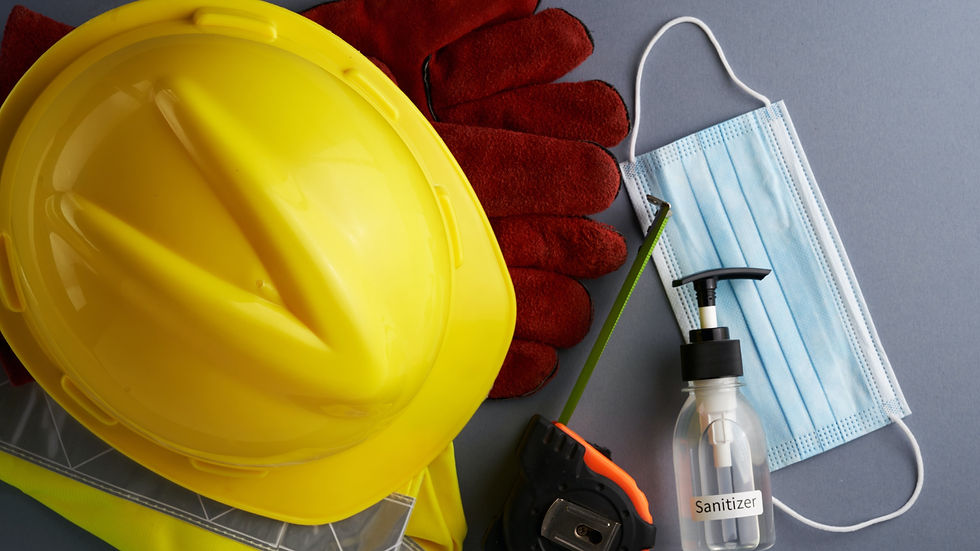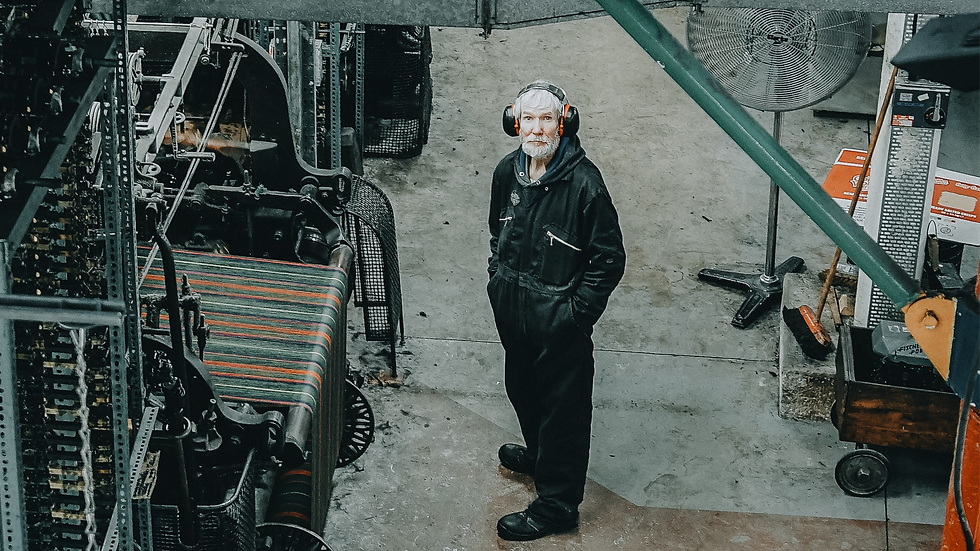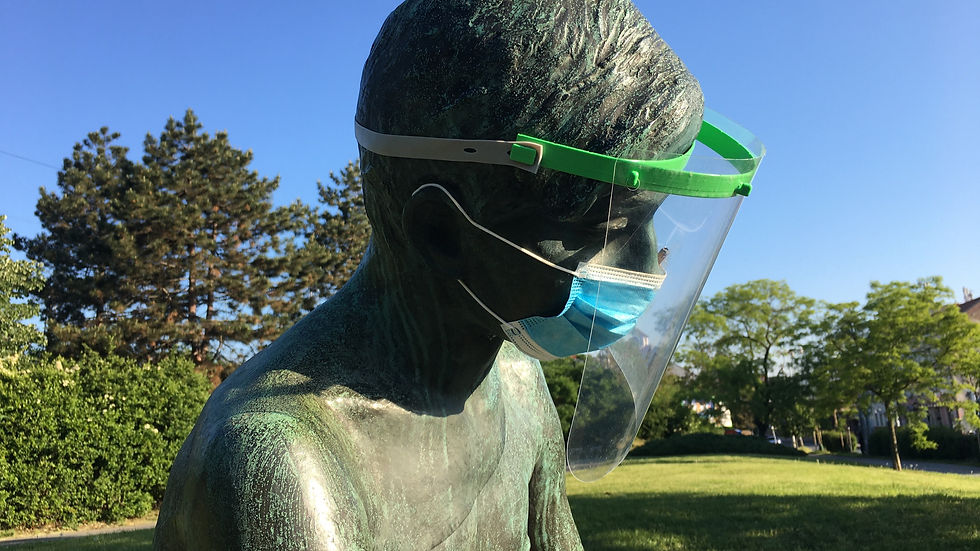Safety at Work 2
- Jon Moore
- Jan 31, 2022
- 5 min read
Updated: Feb 3, 2022
Top 10 Items of PPE for a Safe Industrial Workplace

"Even the slowest animals know how important a helmet is" - Bike Magazine
My father and my grandfather spent a large part of their working lives surrounded by heavy machines and very loud noises which proved damaging to their ears. Unfortunately their working lives were spent at a time when the workers health and safety was not paramount and accidents and work-related deaths were relatively common-place.
So, when I started work many years later, working on the factory floor, my grandfather was amazed at the additional clothing and items of protection I was given, for my safety. In his day, he would have worn his regular clothes and shoes, whereas 60 years later I was supplied with protective overalls, safety boots, ear defenders and gloves, all in a way to protect me from physical harm from the workplace. He found it an amazing transition, and one for the better.
How important do you rate your health and safety at work?
Is your health and safety one of those occupational hazards you take for granted? Or, is your health and safety top of the list of your daily tasks?
If the health and safety of you and your workforce is not of paramount importance, here are ten daily safety tips you need to introduce to make your workplace and your workspace safer for you and those around you.
In order for you to maintain the safety of yourself and your workforce, there are a number of regulations you must adhere to in order to remain legal in your managing of people at work.
One of those regulations is the protection of the self through the wearing of personal protective clothing - PPE. It is the business-owners' responsibilities to provide PPE for their staff and ensure that the PPE is in good order and fit for purpose.
“It is illegal for your employer to expect you to work without personal protective equipment (PPE) in hazardous environments.” - Steven Magee
What is PPE?
PPE - Personal Protective Equipment refers to any item worn by an employee that protects them from injury or harm caused by hazards in the workplace.
The Occupational Safety and Health Administration (OSHA) states employers are responsible for the provision of any necessary PPE in accordance with OSHA standards.
Here is a list of ten items of PPE for a safer industrial workplace.

Hardhats
Hard hats are designed to protect the wearer from head injury caused by falling, flying or fixed objects. Hard hats must be penetration, shock-, and water-resistant, as well as being slow-burning.
OSHA require all employees with long hair cover and protect it from being caught in machinery.
If a hard hat is damaged, it must be replaced.
Leggings, foot guards and safety shoes
Leggings, foot guards and safety shoes or boots help protect employees from workplace hazards, such as falling, rolling, or sharp objects; wet, slippery or hot surfaces; and electrical hazards.
Earplugs and earmuffs
Earplugs, earmuffs and ear defenders are designed to protect the wearer from excessive noise exposure, which may lead to irreparable hearing damage and an increased stress.
Specially molded earplugs should be supplied to any worker who is consistently exposed to high levels of noises.

Gloves
Gloves, finger guards and arm coverings will protect employees from skin damage caused by cuts, chemical exposure, thermal burns and/ or punctures to the skin. Hand protection should provide adequate protection dependant on the level of exposure and the risk to the worker.
Eye protection
Protective eyewear is necessary in certain workplace areas to protect the wearer from flying particles, hot liquids, molten metal, chemical gases and harmful radiation. These must be close fitting and comfortable to the wearer.
They must also be cleanable and should not restrict vision or movement.
“Safety work is today recognized as an economic necessity. It is the study of the right way to do things." - Robert W Campbell
Surgical face masks
A surgical mask, or face mask, is a loose-fitting, disposable device that covers the wearers mouth and nose to create a physical barrier between the wearer and the environment.
The face masks acts to protect the wearer from large particles droplets or splatters that may contain germs as well as reducing saliva and respiratory secretions the wearer passes to others.
Don't miss a blog post or an update, sign up now for more tips and tricks for social media marketers.
Respirators
Respirators are designed to protect the wearer from the inhalation of air contaminated with harmful dust, fumes, gases or sprays. These must be close-fitting to the face and cover the nose and mouth.

Face shields
Face shields consist of a visor, a lightweight plastic or metal frame, and a suspension system that attaches the shield to the head of the wearer. Providing full face protection, this PPE is typically worn on top of masks or goggles to prevent the inhalation of toxic substances or, as in the case of COVID-19, virus-carrying aerosol droplets.
Proximity sensors
This device is typically used to indicate the proximity of a user to a hazardous object but has been updated by product developers to help manufacturing employees adhere to the six foot separation guidelines. This is also a means to track exposure to COVID-19 within the workplace.
“Safety brings first aid to the uninjured.” – F.S. Hughes
Body shields
For particularly hazardous conditions, workers might be required to protect their entire body. Body protection comes as jackets, aprons, lab coats, overalls, and full bodysuits. They are made from a range of materials including fire-retardant wool or cotton, rubber, leather, and plastic.
Protection of this kind must be carefully measured for each employee to ensure a proper fit.
The wearing of PPE can feel uncomfortable, and it is natural to want to skip wearing it, but you need to ask yourself how important your eyesight, your hearing, your physical or mental well-being really is and do not cut corners.
Who We Are
Accent on Training have been helping companies improve their social media presence and engagement through bespoke marketing strategies. We are a provider of bespoke solutions for social media marketing, branding, logo design and website design and optimization.
Accent on Training can help you build a strong digital foundation for your business. We'll assist you in strengthening your marketing with unique branding and bespoke digital solutions.
If you need any information or assistance in designing your website, contact us for more information.
About the author Jonathan Moore is the founder of Accent on Training, a Social Media Management, Brand and Website design agency based in Seoul, South Korea. For nearly ten years, he has helped clients in developing their businesses online through branding, website design and bespoke social media marketing solutions. Thanks for reading, I am fortunate to be able to reach my audience through this blog. Each week I share simple tips on time management, social media, social media management and other aspects of business to help you reach your business goals faster. Enter your name and email to join us.



Comments